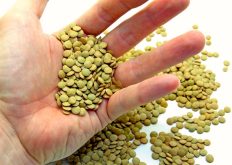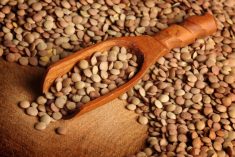CNS Canada — Saskatchewan farmers are still putting the finishing touches on this year’s chickpea harvest, with quality and calibre the two most important pricing factors to watch going forward.
“We’re seeing a wide range of quality — everything from decent to significantly damaged,” said Colin Young of Midwest Investments in Moose Jaw.
While green seed can often be a problem with chickpeas, this year the excessive fall moisture led to sprouting in some crops. However, he added, chickpeas fared the same as lentils in the region.
Read Also

U.S. grains: Soybeans bounce as Chinese demand assessed, wheat drops
Chicago soybean prices firmed on Friday in a bargain-buying bounce after a sharp fall on Thursday, as traders assessed prospects for more U.S. sales to China after the trade war truce between the countries.
“The yields are fantastic, but the quality is all over the map,” said Young.
Smaller-calibre seven-mm and eight-mm chickpeas are seeing the most pressure, with ample supplies of cheaper Russian and Argentine chickpeas dominating the market, said Young.
Meanwhile, larger nine-mm and 10-mm calibre varieties, such as the Orion kabuli chickpeas, are still seeing relative strength.
Young said there was a big price spread between large- and smaller-calibre chickpeas. Ten-millimetre kabuli chickpeas were priced at around 33 cents per pound and nine-mm at 28 cents. Prices for smaller calibre eight-mm and seven-mm supplies were only at around 18 cents per pound.
There are also discounts for quality, at roughly one cent per percentage point of damage. However, Young said, the pet food market was creating some additional demand opportunities for lower-grade supplies.
As an example, so-called reject chickpeas may have once gone for only four to six cents per pound into the feed market, but could now fetch eight to 12 cents per pound with the emergence of the pet food market.
Larger-calibre chickpeas have more room to the downside from a quality perspective, before they reach the off-grade price levels. Meanwhile, Young noted, it wouldn’t take much to move a smaller-calibre chickpea down to the off-grades.
— Phil Franz-Warkentin writes for Commodity News Service Canada, a Winnipeg company specializing in grain and commodity market reporting.















